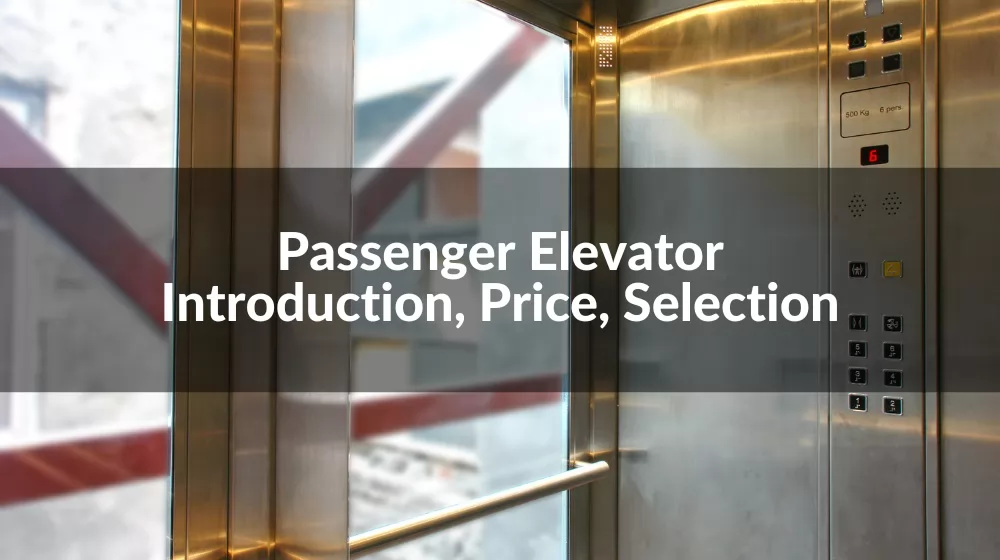
Passenger elevator has long been a very important vertical transportation tool in daily life, and it is widely used in various buildings.
This article will introduce you in detail the basic information, features, price, selection points, dealer matters and other important information of passenger elevators, which will be helpful to developers and dealers who need to purchase passenger elevators.
If you have questions about prices, you can check here.
1.1 Definition of a Passenger Elevator
1.2 Purpose of a Passenger Elevator
1.3 Types of Passenger Elevators
2.Features of Passenger Elevators
3.Precautions when Using Passenger Elevators
4.Maintenance Matters for Passenger Elevators
4.4 Importance of Regular Maintenance
5.Cost Considerations for Passenger Elevators
5.4 Cost Comparison with Staircases
6.Model Selection for Passenger Elevators
7.Dealer Purchases of Passenger Elevators
7.1 Finding a Reputable Dealer
8.Future Trends in Passenger Elevator Technology
9.Benefits of Installing a Passenger Elevator
10.Passenger Elevator Codes and Regulations
11.Factors to Consider When Upgrading Your Passenger Elevator
12.Frequently Asked Questions about Passenger Elevators
12.1 How much does a passenger elevator cost?
12.2 What are the safety features of a passenger elevator?
12.3 How often does a passenger elevator need maintenance?
12.4 Can a passenger elevator be installed in an existing building?
1.Introduction
1.1 Definition of a Passenger Elevator
Passenger lift (also known as passenger elevator): A vertical lift powered by an electric motor, equipped with a box-shaped pod, which can be used in multi-story buildings. Elevators designed for transportation of passengers require perfect safety facilities, the elevator interior sits with certain decorations. Passenger elevators are commonly found in office buildings, hotels, apartment buildings, and other multi-story structures.
1.2 Purpose of a Passenger Elevator
The main purpose of a passenger elevator is to provide a convenient and efficient means of vertical transportation for people within a building. It allows individuals to quickly and easily access different floors of a building, reducing the need to climb stairs or use ramps. This is especially beneficial for people with disabilities or mobility issues, as well as for those carrying heavy loads or traveling with young children. By eliminating the need to walk up and down stairs, passenger elevators help to increase accessibility and improve the overall functionality of a building.
1.3 Types of Passenger Elevators
There are several types of passenger elevators, including:
Hydraulic elevators
Powered by hydraulic fluid pressure, these elevators are typically slower than their electric counterparts and are used in low-rise buildings.
Traction elevators
These elevators use electric motors to move the cabin along guide rails, and they are commonly used in high-rise buildings.
Machine room-less elevators
These elevators do not require a separate machine room, making them more space-efficient and cost-effective.
Glass elevators
These elevators feature glass walls, making them ideal for use in buildings with panoramic views.
Panoramic elevators
Similar to glass elevators, these elevators feature glass walls and ceilings, providing an unobstructed view of the surrounding area.
Dumbwaiter elevators
These elevators are designed to transport small items, such as food and supplies, between different floors of a building.
Each type of passenger elevator has its own unique features and benefits, and the best type for a particular building depends on various factors such as the number of floors, the height of the building, and the intended use of the elevator.
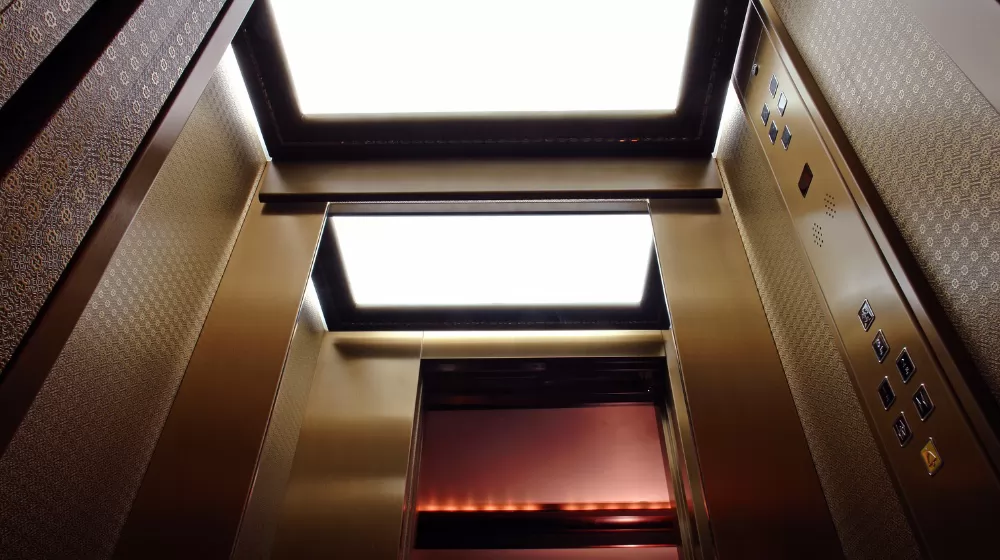
2.Features of Passenger Elevators
2.1 Capacity
Most passenger elevators are designed to carry between 8 and 20 people, with standard cabin sizes ranging from 4 feet by 6 feet (1.2 meters by 1.8 meters) to 6 feet by 8 feet (1.8 meters by 2.4 meters). Some elevators also feature wheelchair ramps or designated spaces for wheelchairs, which can impact their overall capacity. When specifying an elevator for a building, it is important to consider not only the expected number of passengers, but also the weight of any equipment or packages they may be carrying.
2.2 Speed
Most modern passenger elevators have a speed of around 500 fpm (2.5 m/s) to 1,200 fpm (6.1 m/s). Higher speeds are typically reserved for elevators in taller buildings, where the time savings can be significant, while lower speeds are often used in shorter buildings or in elevators that are designed to move people with disabilities. The speed of an elevator is an important consideration when designing a building, as it can impact the overall functionality and convenience of the elevator system.
2.3 Door Types
The door type of a passenger elevator refers to the design and mechanism used for opening and closing the entrance to the elevator cabin. There are several types of elevator doors, including:
Center-opening doors
These doors have a single panel that opens in the center of the cabin, dividing it into two halves.
Side-opening doors
These doors have two panels that open on opposite sides of the cabin, allowing passengers to enter and exit from either side.
Bi-parting doors
These doors have two panels that slide open from the center, similar to center-opening doors.
Telescoping doors
These doors have panels that slide open and closed in a telescoping manner, allowing the entrance to the elevator to be compact when closed and spacious when open.
Accordion doors
these doors have panels that fold together like an accordion when opening, making them ideal for applications where space is limited.
2.4 Safety Features
Passenger elevators are equipped with several safety features to ensure the safety and comfort of passengers. Some common safety features include:
Overload protection
This prevents the elevator from moving if it is carrying more weight than it is designed to handle.
Emergency stop button
This allows passengers to stop the elevator in an emergency situation.
Door interlocks
These prevent the doors from closing if an object is in the way, or if the elevator is not on the correct floor.
Emergency lighting
This provides illumination in the event of a power failure.
Emergency brakesThese engage if the elevator cable breaks or the elevator encounters another issue, bringing the elevator to a stop and preventing it from falling.
Emergency alarms
These sound in the event of an emergency, alerting passengers and building personnel to the situation.
Backup power systems
These provide power to the elevator in the event of a power failure, allowing it to move to the nearest floor and open its doors.
Phone or communication systems
These allow passengers to communicate with building personnel in the event of an emergency.
These are just a few of the many safety features found in modern passenger elevators. The specific safety features included in a passenger elevator will depend on the building code requirements in the area where the elevator is installed and the intended use of the elevator.
2.5 Energy Efficiency
Some features that can contribute to the energy efficiency of a passenger elevator include:
Regenerative drives
These use the energy generated during deceleration to power other building systems, reducing the amount of energy consumed by the elevator.
Energy-efficient motors
These use less energy than traditional motors, reducing the elevator's overall energy consumption.
Energy-saving control systems
These optimize the operation of the elevator, reducing energy consumption while ensuring efficient and reliable service.
LED lighting
This uses less energy than traditional incandescent lighting, helping to reduce the energy consumption of the elevator.
Insulated cabins
These reduce the amount of energy required to maintain a comfortable temperature in the elevator, improving its overall energy efficiency.
Power management systems
These regulate the energy consumption of the elevator, ensuring that it uses only the energy it needs to operate effectively.
Energy efficiency is becoming increasingly important in the design and operation of passenger elevators. Elevators can consume a significant amount of energy, especially in high-rise buildings, and improving their energy efficiency can help reduce a building's overall carbon footprint and energy costs.
In addition to these specific features, the overall design of the elevator system can also impact its energy efficiency. For example, designing the system to reduce the number of stops and the distance traveled by the elevator can help reduce its energy consumption.
2.6 Control Systems
A control system is a critical component of a passenger elevator, as it determines the operation and performance of the elevator. It includes hardware, software, and communication systems that work together to control the movement of the elevator car and provide information to passengers.
Dispatching
The control system can use algorithms to determine the most efficient path for the elevator to reach its destination, reducing wait times and improving service.
Elevator Car Positioning
The control system can accurately determine the position of the elevator car and use this information to control its movement.
Speed Control
The control system can regulate the speed of the elevator car to ensure a smooth and safe ride.
Overload Protection
The control system can detect when the elevator is carrying too much weight and prevent it from moving, improving safety.
Emergency Systems
The control system can include emergency systems such as alarms, emergency lighting, and intercoms to improve safety and communicate with passengers.
Diagnostics and Maintenance
The control system can provide information to maintenance personnel, allowing them to diagnose and repair problems more efficiently.
User Interfaces
The control system can include interfaces such as buttons, displays, and speakers, to allow passengers to interact with the elevator and receive information.
The specific features included in a passenger elevator control system will depend on the intended use of the elevator, the budget, and local regulations. Some advanced control systems may also include features such as energy-saving modes, monitoring systems, or remote access capabilities.
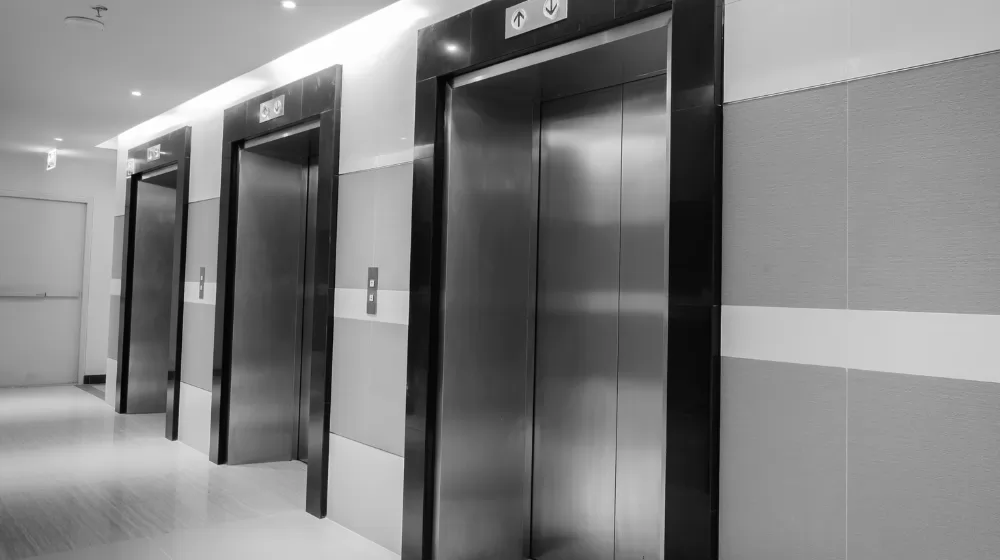
3.Precautions when Using Passenger Elevators
3.1 Safety Considerations
Using a passenger elevator is generally safe, but there are some precautions that should be taken to ensure a safe and comfortable ride.
Follow instructions
Read the posted instructions and warning signs in the elevator, and follow any instructions or procedures provided.
Stand clear of the doors: Stand clear of the doors when they are closing, and do not try to stop the doors from closing.
Use handrails
If available, hold onto the handrails while the elevator is moving, to maintain balance and stability.
Keep the floor clear
Do not obstruct the floor with bags, packages, or other items, as this can cause tripping hazards or block the doors from closing.
Watch your step
Step carefully when entering and exiting the elevator, as the floor level may be different from the surrounding area.
Report any issues
If you notice any problems with the elevator, such as strange noises, unusual movements, or malfunctions, report it to the building management or emergency services immediately.
Know the emergency procedures
Familiarize yourself with the emergency procedures posted in the elevator, including how to use the emergency phone or alarm, and how to open the doors in case of a power outage.
3.2 Maintenance Requirements
Regular maintenance is important for ensuring the safety and reliability of passenger elevators. Here are some precautions and maintenance requirements when using passenger elevators:
Scheduled maintenance
Building owners or managers should schedule regular maintenance inspections to check the elevator's components, including the control system, motors, brakes, doors, and emergency systems.
Regular cleaning
The interior and exterior of the elevator should be cleaned regularly to keep it free of debris, dirt, and moisture.
Reporting problems
If you notice any issues with the elevator, such as strange noises, unusual movements, or malfunctions, report it to the building management or emergency services immediately.
Professional repairs
Elevator repairs should only be performed by trained and licensed professionals, as attempting to repair an elevator yourself can be dangerous and could void the warranty.
Emergency procedures
Building management should have emergency procedures in place for responding to elevator malfunctions or failures, including how to evacuate passengers and provide emergency services.
Regular safety tests
Building management should regularly perform safety tests on the elevator, including door safety tests, over-speed tests, and emergency stop tests.
By following these precautions and maintenance requirements, building owners or managers can help ensure the safety and reliability of passenger elevators, and minimize the risk of malfunctions or accidents.
3.3 Emergency Procedures
Knowing the emergency procedures for using a passenger elevator is important for ensuring a safe ride. Here are some common emergency procedures when using passenger elevators:
Emergency stop button
Most passenger elevators have an emergency stop button, which can be used to stop the elevator if there is an issue with the ride.
Emergency alarm
Many passenger elevators have an emergency alarm, which can be activated if there is an issue with the ride, or if you need assistance.
Emergency phone
Some passenger elevators have an emergency phone, which can be used to call for help if there is an issue with the ride, or if you need assistance.
Emergency lighting
In the event of a power outage, passenger elevators are equipped with emergency lighting, which will provide lighting for you to safely evacuate the elevator.
Opening the doors
If the elevator becomes stuck, you may be able to open the doors manually if the power is out. The manual release is usually located near the doors or in the control panel.
Evacuation procedures
In the event of a malfunction or failure, the building management should have evacuation procedures in place to safely evacuate passengers from the elevator.
4.Maintenance Matters for Passenger Elevators
4.1 Regular Maintenance
Regular maintenance is important for ensuring the safety, reliability, and longevity of passenger elevators.
Scheduled inspections
Building owners or managers should schedule regular maintenance inspections to check the elevator's components, including the control system, motors, brakes, doors, and emergency systems.
Professional repairs
Elevator repairs should only be performed by trained and licensed professionals, as attempting to repair an elevator yourself can be dangerous and could void the warranty.
Cleaning
The interior and exterior of the elevator should be cleaned regularly to keep it free of debris, dirt, and moisture.
Lubrication
The moving parts of the elevator should be lubricated regularly to reduce wear and tear and improve performance.
Testing safety systems
Building management should regularly test the safety systems of the elevator, including door safety tests, over-speed tests, and emergency stop tests.
Updating safety systems
Building management should regularly update the safety systems of the elevator to ensure they are in compliance with current safety standards and regulations.
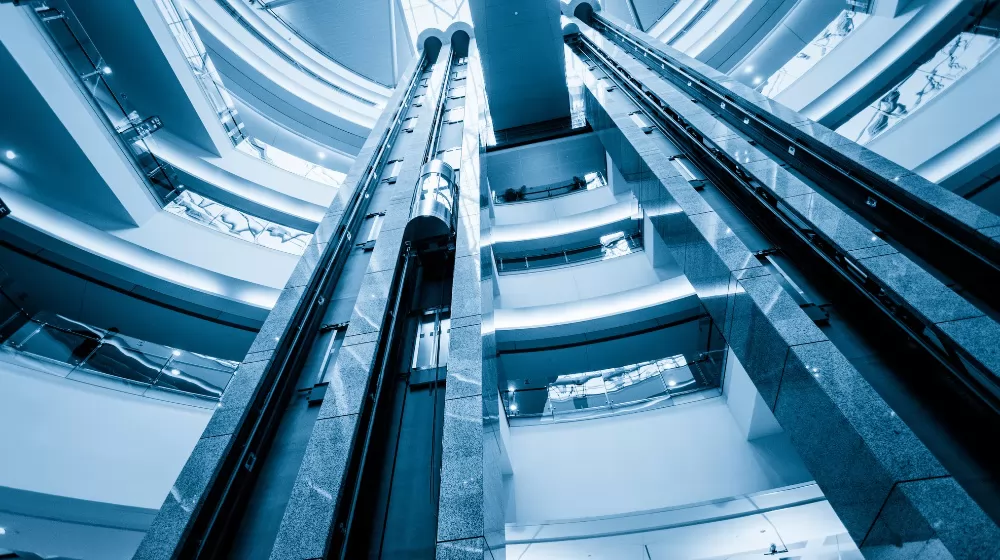
4.2 Repair and Replacement
Repair and replacement are important maintenance matters for passenger elevators to ensure their safe and reliable operation.
Professional repairs
Elevator repairs should only be performed by trained and licensed professionals, as attempting to repair an elevator yourself can be dangerous and could void the warranty.
Timely repairs
Repairs should be performed as soon as possible to minimize the risk of malfunctions or accidents, and to ensure the elevator remains in good working condition.
Component replacement
Worn or damaged components should be replaced as soon as possible to maintain the elevator's safety and reliability.
Updating systems
As technology and safety standards evolve, building owners or managers should consider updating the elevator's systems, including the control system, motors, brakes, doors, and emergency systems.
Elevator replacement
Over time, the cost of repairing an elevator may become too high, and it may be necessary to replace the elevator to ensure its continued safe and reliable operation.
4.3 Scheduling Maintenance
Scheduling regular maintenance for passenger elevators is important for ensuring their safe and reliable operation.
Frequency
Building owners or managers should schedule regular maintenance inspections, typically every 6 months to a year, to check the elevator's components, including the control system, motors, brakes, doors, and emergency systems.
Timing
Maintenance should be scheduled at a time that is convenient for building occupants, and should be performed during off-peak hours, if possible, to minimize disruption.
Professional technicians
Building owners or managers should ensure that maintenance is performed by trained and licensed professionals who have the necessary skills and expertise to perform repairs and replacements.
Record keeping
Records should be kept of all maintenance activities, including inspections, repairs, and replacements, to ensure that the elevator is being maintained properly and to help identify any potential problems.
Planning for emergency repairs
Building owners or managers should have a plan in place for emergency repairs, in case the elevator stops working suddenly. This may involve having a backup elevator, or a service agreement with an elevator repair company.
By scheduling regular maintenance and keeping records of all maintenance activities, building owners or managers can help ensure the safety, reliability, and longevity of their passenger elevators, and minimize the risk of malfunctions or accidents.
4.4 Importance of Regular Maintenance
Regular maintenance is important for passenger elevators for several reasons:
Safety
Regular maintenance ensures that the elevator is operating safely, reducing the risk of accidents or malfunctions.
Reliability
Regular maintenance helps to keep the elevator in good working condition, reducing the risk of breakdowns and ensuring that building occupants can use the elevator without interruption.
Longevity
Regular maintenance helps extend the lifespan of the elevator, reducing the need for costly repairs and replacements.
Compliance with codes and standards
Regular maintenance helps ensure that the elevator meets all relevant safety codes and standards, which can help protect building occupants and the building owner or manager from legal liability.
Cost savings
Regular maintenance can help reduce the overall cost of maintaining the elevator, as small problems can be detected and repaired before they become larger, more costly problems.
Good reputation
A well-maintained elevator can help build a positive reputation for the building, which can be beneficial for building owners or managers and building occupants.
By performing regular maintenance, building owners or managers can help ensure the safety, reliability, and longevity of their passenger elevators, and minimize the risk of malfunctions or accidents.
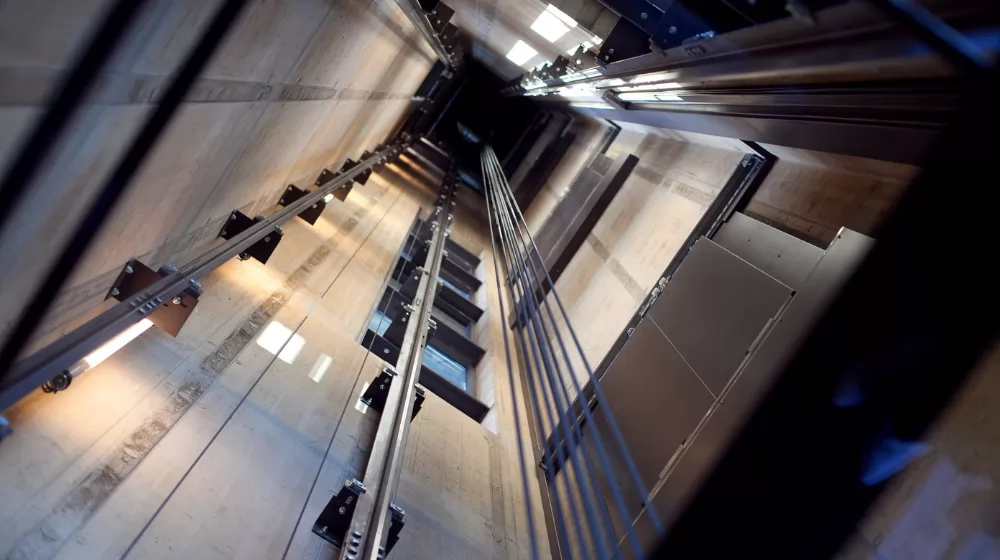
5.Cost Considerations for Passenger Elevators
5.1 Initial Cost
The initial cost of a passenger elevator is the cost of purchasing, installing, and commissioning a new elevator system. This cost can vary greatly depending on several factors, including:
Elevator size
The size of the elevator, including the number of floors it will serve and the size of the elevator car, will impact the initial cost.
Equipment type
The type of equipment used, including the type of motor, control system, and safety features, will impact the initial cost.
Location
The location of the building, including the cost of permits and the cost of labor, will impact the initial cost.
Customization
Any customization of the elevator, including cab interiors, flooring options, lighting options, and control systems, will impact the initial cost.
Installation method
The method of installation, including whether the elevator is installed in an existing building or a new building, will impact the initial cost.
The initial cost of a passenger elevator can range from tens of thousands to hundreds of thousands of dollars, depending on the factors mentioned above. Building owners or managers should work with a qualified elevator contractor to determine the cost of a passenger elevator that meets their specific needs and budget.
5.2 Ongoing Maintenance Costs
The ongoing maintenance costs of a passenger elevator can range from a few hundred dollars per year to several thousand dollars per year, depending on the factors mentioned above. Building owners or managers should budget for ongoing maintenance costs when planning the installation of a new passenger elevator and should work with a qualified elevator contractor to determine the ongoing maintenance costs for their specific elevator.
Regular maintenance
The cost of regular maintenance, such as cleaning, lubrication, and inspection, will vary depending on the type of equipment used and the frequency of maintenance.
Repair and replacement
The cost of repairing or replacing parts that wear out over time, such as motors, control systems, and safety features, will vary depending on the age of the equipment and the frequency of use.
Upgrades
The cost of upgrading the elevator, including the cost of new equipment, software, and safety features, will vary depending on the type of upgrade and the complexity of the upgrade.
Energy costs
The cost of energy used by the elevator, including the cost of electricity, will vary depending on the efficiency of the equipment used and the frequency of use.
5.3 Energy Efficiency Savings
Energy efficiency savings can be significant for passenger elevators, especially if the elevator is used frequently. The following are ways to achieve energy efficiency savings for passenger elevators:
Energy-efficient equipment
Installing energy-efficient equipment, such as motors, control systems, and lighting, can reduce the energy used by the elevator and lower energy costs.
Load management
Implementing load management systems, such as car weight sensors and load balancing, can increase the efficiency of the elevator by reducing the energy used by the elevator and improving the speed of the elevator.
Energy-saving modes
Implementing energy-saving modes, such as sleep modes or standby modes, can reduce the energy used by the elevator when it is not in use.
Monitoring energy usage
Regularly monitoring energy usage, including monitoring the energy used by the elevator and monitoring the energy used by the building as a whole, can help identify ways to reduce energy usage and achieve energy efficiency savings.
5.4 Cost Comparison with Staircases
The cost of a passenger elevator compared to a staircase will depend on various factors, including the size of the building, the type of elevator, the type of staircase, and the location.
Installation cost
The installation cost of a passenger elevator is typically higher than the installation cost of a staircase, especially if the elevator requires significant construction work or if the building is not pre-equipped for an elevator.
Maintenance cost
The maintenance cost of a passenger elevator is typically higher than the maintenance cost of a staircase, as elevators require regular maintenance and repair, whereas staircases typically do not.
Energy cost
The energy cost of a passenger elevator can be higher than the energy cost of a staircase, as elevators require energy to operate, whereas staircases do not. However, energy-efficient elevators can reduce energy costs.
Space requirements
Passenger elevators typically require more space than staircases, as elevators require a shaft and other associated equipment.
Accessibility
Passenger elevators provide greater accessibility for people with disabilities or mobility issues compared to staircases, which can be an important factor in some cases.
6.Model Selection for Passenger Elevators
6.1 Factors to Consider
When selecting a model for a passenger elevator, there are several factors that should be considered to ensure that the right model is chosen for the specific needs of the building.
Building height
The height of the building and the number of floors will affect the type of elevator that is needed, as well as the cost of the elevator.
Passenger capacity
The number of passengers that will be using the elevator will determine the size of the elevator required, as well as the cost of the elevator.
Speed
The speed of the elevator is an important factor to consider, as this will affect the overall efficiency of the elevator and the time it takes to travel between floors.
Flooring
The type of flooring in the elevator cab will affect the appearance and durability of the elevator, as well as the cost of the elevator.
Safety features
The safety features required for the elevator, such as emergency brakes and emergency phones, will affect the cost of the elevator.
Energy efficiency
The energy efficiency of the elevator will affect the ongoing energy costs of the elevator, as well as the environmental impact of the elevator.
Control system
The control system for the elevator, such as a traditional call-and-answer system or a more advanced computerized system, will affect the cost and functionality of the elevator.
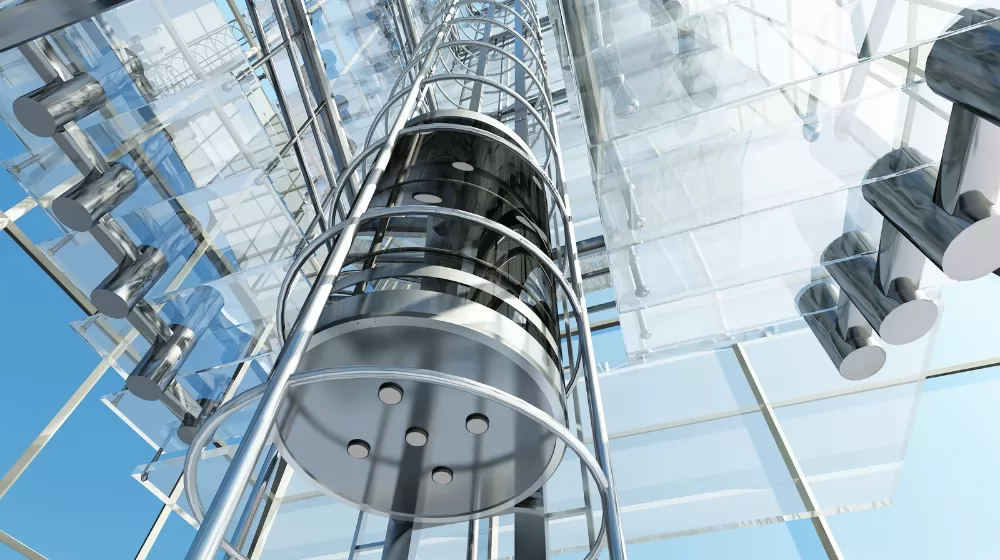
6.2 Elevator Brands
We will provide you with a list, if you need detailed information you can read this article: Top 10 Elevator Manufacturers in the World
List of Top 10 Elevator Company Brands:
6.3 Customization Options
Passenger elevators can be customized in various ways to meet the specific needs of a building and its occupants. Building owners or managers should consult with elevator experts and manufacturers to determine the best customization options for their building and its occupants. Customization can improve the functionality, safety, and overall experience of a passenger elevator, but it can also add to the cost of installation and maintenance.
Cab Interiors
Passenger elevators can be designed with a variety of finishes, materials, and colors to match the overall aesthetic of a building.
Lighting Options
Elevator cabs can be fitted with different types of lighting, including LED lights, to improve visibility and create a welcoming atmosphere.
Flooring Options
Elevator flooring can be selected from a variety of materials, including carpet, vinyl, or stone, to match the flooring of the building's interior.
Control Systems
Elevator control systems can be customized to meet the specific needs of a building, including the integration of advanced technologies like voice-activated controls or smartphone connectivity.
Door Types
Elevators can be fitted with a variety of door types, including sliding doors, bi-parting doors, and telescoping doors, to meet the specific needs of a building and its occupants.
Safety Features
Elevators can be equipped with a range of safety features, including emergency brakes, alarms, intercoms, and automatic door reopening systems, to ensure the safety of passengers.
6.4 Measuring Your Space
Measuring your space is an important factor to consider when selecting a passenger elevator model.
Accurate measurements of your space will help ensure that the selected passenger elevator model will fit in your building and function properly. Building owners and managers should consult with elevator experts to accurately measure their space and determine the best passenger elevator model for their building.
Floor-to-floor height
This measurement determines the overall height of the elevator shaft and the maximum travel distance of the elevator.
Cab size
The size of the elevator cab will determine the maximum number of passengers it can carry and the amount of luggage or packages they can bring with them.
Door opening
The width of the door opening will determine the size of the cab entrance and exit, and will also influence the design of the elevator doors.
Machine room
Elevators typically require a machine room to house the motor, control panel, and other electrical equipment. The size of the machine room will depend on the size and type of elevator selected.
Overhead clearance
Elevators require overhead clearance to accommodate the movement of the elevator car, overhead beams, and mechanical equipment.
Pit depth
Elevators require a pit at the bottom of the shaft to allow for proper operation and maintenance. The pit depth will vary depending on the type of elevator selected.
7.Dealer Purchases of Passenger Elevators
7.1 Finding a Reputable Dealer
When purchasing a passenger elevator, it is important to work with a reputable dealer to ensure you are getting a high-quality product that meets your specific needs and budget.
Research
Look for reviews and recommendations from other building owners or managers who have purchased passenger elevators. Check the dealer's reputation and experience in the industry.
Get referrals
Ask for referrals from friends, family, or other business owners who have purchased passenger elevators. This can help you find a dealer with a good track record.
Ask for references
Ask the dealer for references from previous clients to verify their experience and reliability. Contact the references and ask about their experiences with the dealer.
Check credentials
Look for dealers who are licensed and insured, and who are members of industry organizations.
Get quotes from multiple dealers
Get quotes from multiple dealers to compare prices, products, and services. This can help you find a dealer who offers the best value for your budget.
Look for a dealer with a good warranty
Look for a dealer who offers a comprehensive warranty on the passenger elevator and its components. This will provide you with peace of mind knowing that you are protected in case of any issues with the elevator.
7.2 Evaluating Quotes
When evaluating quotes from different dealers for the purchase of a passenger elevator, it is important to consider several key factors to ensure you are getting the best value for your investment. Here are some factors to consider:
Price
Compare the prices of the passenger elevators and services offered by different dealers to find the best value for your budget.
Products
Make sure that the passenger elevators being offered meet your specific needs and requirements, including size, capacity, speed, and safety features.
Services
Evaluate the services offered by each dealer, including installation, maintenance, and repair services.
Warranty
Compare the warranty offered by each dealer to ensure you are protected in case of any issues with the passenger elevator.
Experience
Consider the experience and reputation of the dealer in the industry. Look for dealers who have a proven track record of providing high-quality passenger elevators and services.
Availability
Ensure that the dealer can provide you with the passenger elevator within the timeline you need it.
By considering these factors, you can evaluate quotes from different dealers to find the best value for your investment in a passenger elevator.
7.3 Installation and Delivery
When purchasing a passenger elevator from a dealer, installation and delivery are critical components of the process.
Installation
Make sure that the dealer you choose provides professional installation services. Check their experience and reputation in installing passenger elevators.
Delivery
Ensure that the dealer can deliver the passenger elevator to your location on time and within the required timeline.
Cost
Compare the cost of installation and delivery services offered by different dealers to find the best value for your investment.
Equipment and Materials
Ensure that the dealer provides all necessary equipment and materials for the installation and delivery of the passenger elevator.
Schedule
Discuss the schedule for installation and delivery with the dealer to ensure that it fits within your timeframe and doesn't cause any disruption to your operations.
7.4 Warranty and Support
When purchasing a passenger elevator from a dealer, warranty and support are critical factors to consider.
Warranty
Check the warranty offered by the dealer on the passenger elevator, including the duration and terms of the warranty. Make sure the warranty covers both parts and labor.
Maintenance and Repair
Ensure that the dealer provides ongoing maintenance and repair services for the passenger elevator, including periodic inspections and tune-ups.
Technical Support
Look for a dealer who offers 24/7 technical support for their passenger elevators, in case of any issues or malfunctions.
Spare Parts
Check if the dealer has a sufficient supply of spare parts for the passenger elevator, in case of any replacements or repairs.
Service Contracts
Consider purchasing a service contract from the dealer for ongoing maintenance and support. This can provide peace of mind and ensure that the passenger elevator continues to operate safely and efficiently.
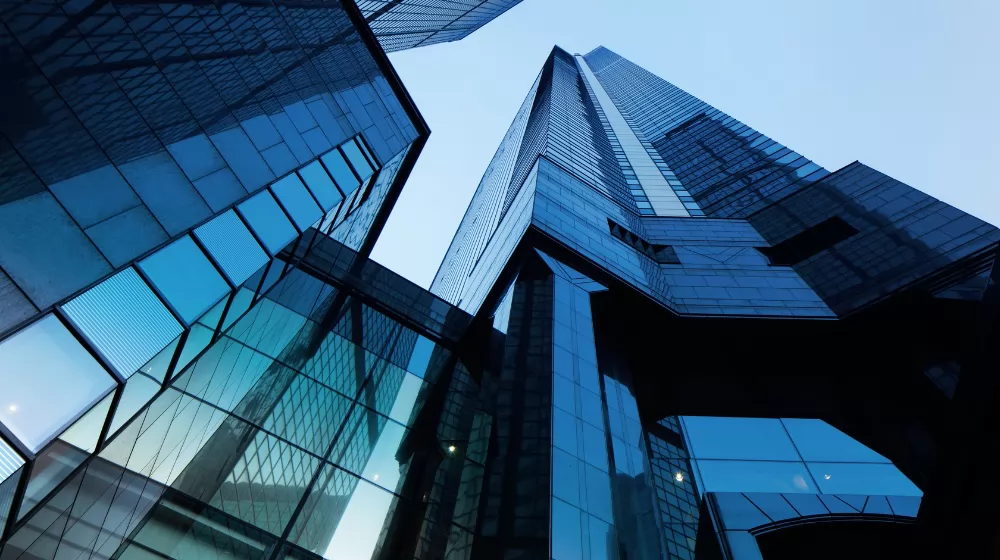
8.Future Trends in Passenger Elevator Technology
The passenger elevator industry is constantly evolving and introducing new technologies to improve the user experience and efficiency of elevators.
Smart Elevators
Elevators equipped with advanced sensors, cameras, and AI algorithms to monitor and optimize their performance, reduce wait times, and improve safety.
Energy-Efficient Elevators
Elevators designed with energy-saving features such as regenerative drives, LED lighting, and smart control systems to reduce energy consumption and operating costs.
Vertical Transportation System (VTS)
A system that integrates multiple elevators and escalators to optimize the flow of people in high-rise buildings and reduce wait times.
Destination Dispatch Elevators
Elevators that use advanced algorithms to assign passengers to specific elevators based on their destination, reducing wait times and optimizing elevator usage.
Glass Elevators
Elevators with glass walls and ceilings, providing panoramic views and a more spacious feel.
Gearless Elevators
Elevators that use direct drive systems instead of gears to improve reliability and reduce maintenance costs.
Wireless Elevator Communication
Elevators that use wireless communication technologies, such as Bluetooth or Wi-Fi, to provide real-time information and improve the user experience.
Intelligent Traffic Management
Advanced algorithms are being used to optimize the flow of passengers and reduce wait times, leading to improved efficiency.
Regenerative Drives
Elevators that use regenerative drives, which capture and reuse the energy generated during braking, are becoming more common, reducing energy consumption and operating costs.
Advanced Control Systems
Elevators equipped with advanced control systems are able to optimize performance and energy consumption, improving efficiency.
Smart Elevator Monitoring
Elevators equipped with sensors, cameras, and AI algorithms are able to monitor their performance in real-time and identify areas for improvement, leading to increased efficiency.
Eco-Friendly Elevators
Elevators designed with environmentally friendly features, such as LED lighting, are becoming more common, reducing energy consumption and improving efficiency.
Interconnected Systems
Interconnecting multiple elevators and escalators in a building can optimize the flow of people and reduce wait times, leading to increased efficiency.
9.Benefits of Installing a Passenger Elevator
9.1 Increased Accessibility
Installing a passenger elevator can greatly improve accessibility, safety, and convenience in a building, and provide numerous other benefits.
Improved Mobility
A passenger elevator provides easy access for people with mobility limitations or disabilities, allowing them to move freely between different levels of a building.
Enhanced Convenience
Installing a passenger elevator eliminates the need for stairs and reduces wait times, making it easier and more convenient for people to move between floors.
Increased Safety
Elevators are designed to be safe and secure, with numerous safety features and emergency procedures in place. They are also easier to use than stairs for many people, reducing the risk of falls and other accidents.
Improved Home Accessibility
Installing a passenger elevator in a home can greatly improve accessibility for people with disabilities, allowing them to live more comfortably and independently.
Increased Property Value
Installing a passenger elevator can increase the value of a property, making it more attractive to potential buyers or renters.
Installing a passenger elevator can greatly improve convenience in a building. Here are some of the benefits:
Reduced Wait Times
Elevators have the ability to move people quickly and efficiently between different levels of a building, reducing wait times and making it easier for people to get to their desired destination.
Improved Accessibility
Installing a passenger elevator eliminates the need for stairs, making it easier and more convenient for people to move between floors, especially for those with mobility limitations or disabilities.
Increased Safety
Elevators are designed to be safe and secure, with numerous safety features and emergency procedures in place. They are also easier to use than stairs for many people, reducing the risk of falls and other accidents.
Improved Home Accessibility
Installing a passenger elevator in a home can greatly improve accessibility for people with disabilities, allowing them to live more comfortably and independently.
Reduced Physical Strain
Elevators are a much easier option than stairs, especially for people who are carrying heavy loads or have mobility limitations, reducing the physical strain of moving between floors.
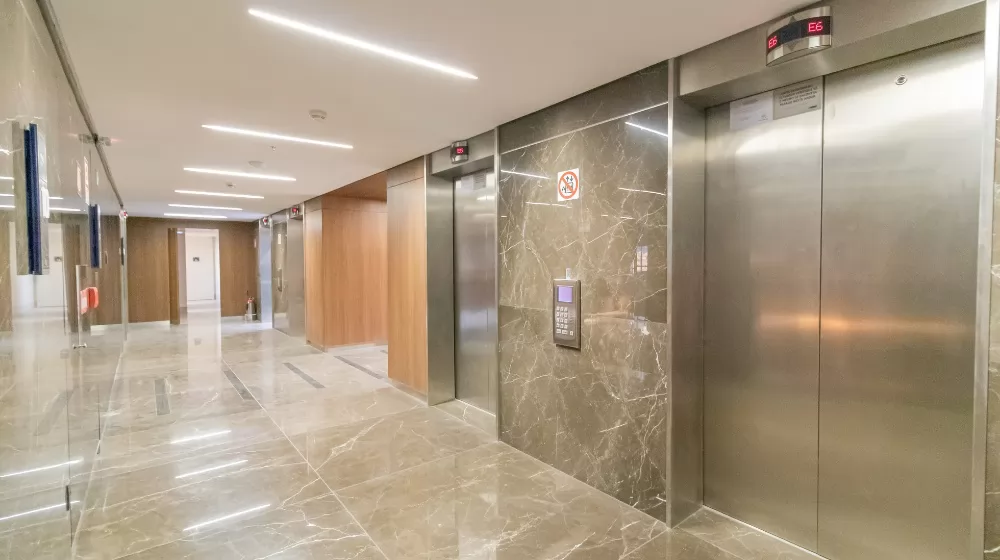
10.Passenger Elevator Codes and Regulations
10.1 Building Codes
Building codes are regulations that ensure the safety and accessibility of buildings, including passenger elevators. These codes outline the minimum requirements for design, construction, and maintenance of elevators, including requirements for load capacity, speed, door type, emergency procedures, lighting, and fire safety. Some common building codes for passenger elevators include the International Building Code (IBC), American National Standards Institute (ANSI), and the Elevator and Escalator Safety Foundation (EESF). It is important to consult with local building officials to determine the applicable building codes for passenger elevators in a specific location.
10.2 Safety Standards
Safety standards are established guidelines for the design, construction, and maintenance of passenger elevators to ensure the safety of users. Some common safety standards for passenger elevators include the American National Standards Institute (ANSI), the International Organization for Standardization (ISO), and the International Elevator and Escalator Association (IEEMA). These standards cover a range of safety features and requirements, such as load capacity, speed, door type, emergency procedures, lighting, and fire safety. Elevator manufacturers must comply with these safety standards to ensure the safety of their products. Building owners and operators must also comply with these standards to ensure the safety of their elevators.
10.3 Industry Regulations
Passenger elevator codes and regulations are put in place to ensure the safety and performance of elevators. Industry regulations, such as those set by organizations such as ASME (American Society of Mechanical Engineers) and OSHA (Occupational Safety and Health Administration), establish standards for the design, construction, testing, installation, operation, maintenance, and inspection of elevators. These regulations cover various aspects of passenger elevators, including weight limits, speed limits, door opening and closing times, emergency operations, and fire safety requirements. Building codes also play a role in regulating passenger elevators, as they determine the minimum requirements for the design and construction of elevators in commercial and residential buildings. Building codes and industry regulations are regularly updated to keep pace with advances in technology and to address changing safety concerns.
10.4 Insurance Requirements
Insurance requirements for passenger elevators vary depending on the jurisdiction, but typically, building owners or managers are required to carry liability insurance for any accidents or injuries that may occur on their property. Elevator service companies may also be required to carry liability insurance for any damages caused during installation or maintenance. In some cases, building codes may also require that elevator equipment be insured. It's important to check with local building codes and insurance providers to understand the specific insurance requirements for passenger elevators in your area.
11.Factors to Consider When Upgrading Your Passenger Elevator
11.1 Age of the Elevator
The age of the elevator is an important factor to consider when upgrading your passenger elevator. Older elevators may not meet current safety codes, be less energy-efficient, or be prone to more frequent breakdowns. Upgrading the elevator to a newer model can ensure that the elevator is in compliance with safety codes and is more reliable, efficient, and convenient. Additionally, upgrading to a newer model may also increase the value of the property.
11.2 Capacity
Capacity refers to the number of passengers and/or amount of weight that an elevator can safely carry. When upgrading a passenger elevator, it is important to consider if the current capacity is adequate for your needs, or if you need to upgrade to a larger capacity elevator to accommodate increasing passenger traffic or increased weight loads. This will help ensure that the elevator operates safely and efficiently, and can accommodate the needs of building users.
11.3 Energy Efficiency
When considering upgrading your passenger elevator, energy efficiency is a critical factor to consider. An outdated elevator system may consume a large amount of energy, resulting in high electricity bills and a negative impact on the environment. Upgrading to a more energy-efficient elevator system can help you save money on energy costs and reduce your carbon footprint. A modern elevator system should have features such as energy-efficient motors, drive systems, and control systems to reduce energy consumption. Additionally, lighting and ventilation systems should be designed to reduce energy consumption and improve air quality.
11.4 Safety Features
When upgrading your passenger elevator, it is important to consider the safety features of the elevator. Upgrades should focus on improving the safety and security of the passengers and making sure that the elevator meets the latest safety standards and codes. Some of the common safety features to consider when upgrading your passenger elevator include:
- Emergency brakes and power backup systems to prevent uncontrolled movements of the elevator
- Intercoms or emergency phones for passengers to communicate with outside help
- Emergency lighting and alarms to alert passengers in case of a power outage
- Over-speed governors to prevent the elevator from moving too fast
- Modern door and gate systems to prevent passengers from being trapped inside the elevator
- Modern fire suppression and smoke detection systems to ensure the safety of passengers in case of a fire.
It is important to work with a licensed and experienced professional when upgrading your passenger elevator to ensure that all safety features are installed properly and that the elevator meets all codes and regulations.
11.5 User Experience
When upgrading your passenger elevator, it is important to consider the user experience.
Cab design
Make sure the cab is spacious, well-lit, and has adequate ventilation. The interior should be attractive and appealing.
Flooring options
Offer different flooring options that match the building's decor and improve the overall look of the elevator.
Lighting options
Lighting should be adequate, and options such as adjustable dimming or color-changing lighting can improve the overall experience.
Control systems
Consider upgrading the control systems to include touchscreens, voice-activated controls, or other modern technologies.
Door types
Consider automatic doors or sliding doors that open smoothly and quickly.
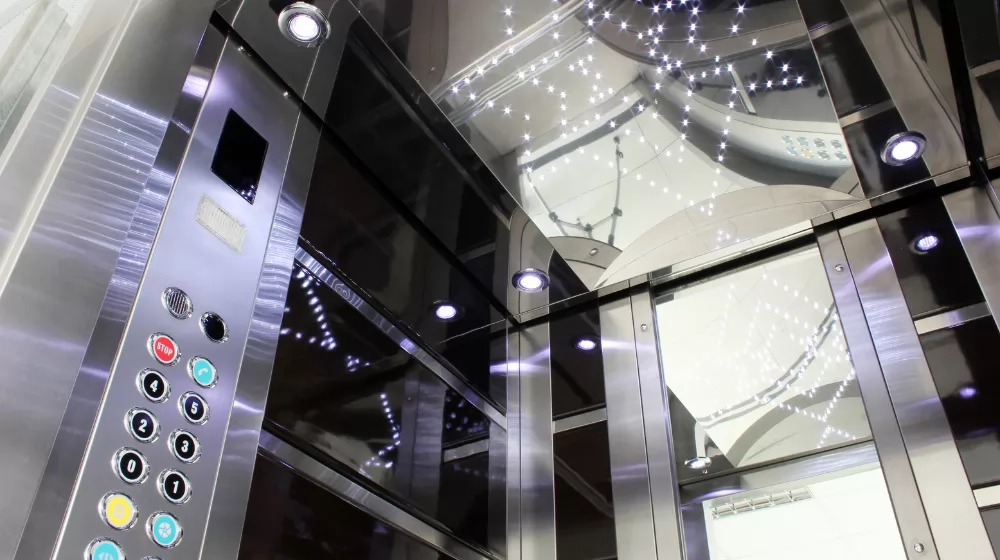
12.Frequently Asked Questions about Passenger Elevators
12.1 How much does a passenger elevator cost?
The cost of a passenger elevator varies depending on various factors such as size, speed, capacity, floor count, features, and brand. On average, the cost of a standard passenger elevator can range anywhere from $20,000 to $100,000 or more for a complete installation. The final cost will depend on the specific requirements of your project, and it's recommended to get multiple quotes from different suppliers to compare the cost and features.
12.2 What are the safety features of a passenger elevator?
Passenger elevators typically include several safety features to ensure the safety of passengers and operation. These may include:
- Emergency stop button
- Over-speed governor to prevent excessive speed
- Emergency backup power system
- Interlocks to prevent unauthorized access
- Fire-rated doors and fire service operation
- Safety edges that detect obstacles and stop the elevator car
- Alarms and lighting to alert passengers and rescuers in case of an emergency
- Emergency telephone or communication system
- Access control to limit use to authorized personnel.
It is important to note that elevators should be installed and maintained by licensed professionals and regularly inspected to ensure they meet safety standards and regulations.
12.3 How often does a passenger elevator need maintenance?
A passenger elevator typically needs regular maintenance on a monthly, quarterly, or semi-annual basis to ensure it is functioning properly and safely. The exact frequency of maintenance may vary depending on usage and other factors, but it is generally recommended to have a professional inspection and maintenance check performed at least once a year.
12.4 Can a passenger elevator be installed in an existing building?
Yes, a passenger elevator can be installed in an existing building. However, this typically requires significant renovations to accommodate the elevator and its related infrastructure, such as electrical and plumbing systems. The extent of these renovations will depend on the design of the existing building and the specific requirements of the elevator being installed.


